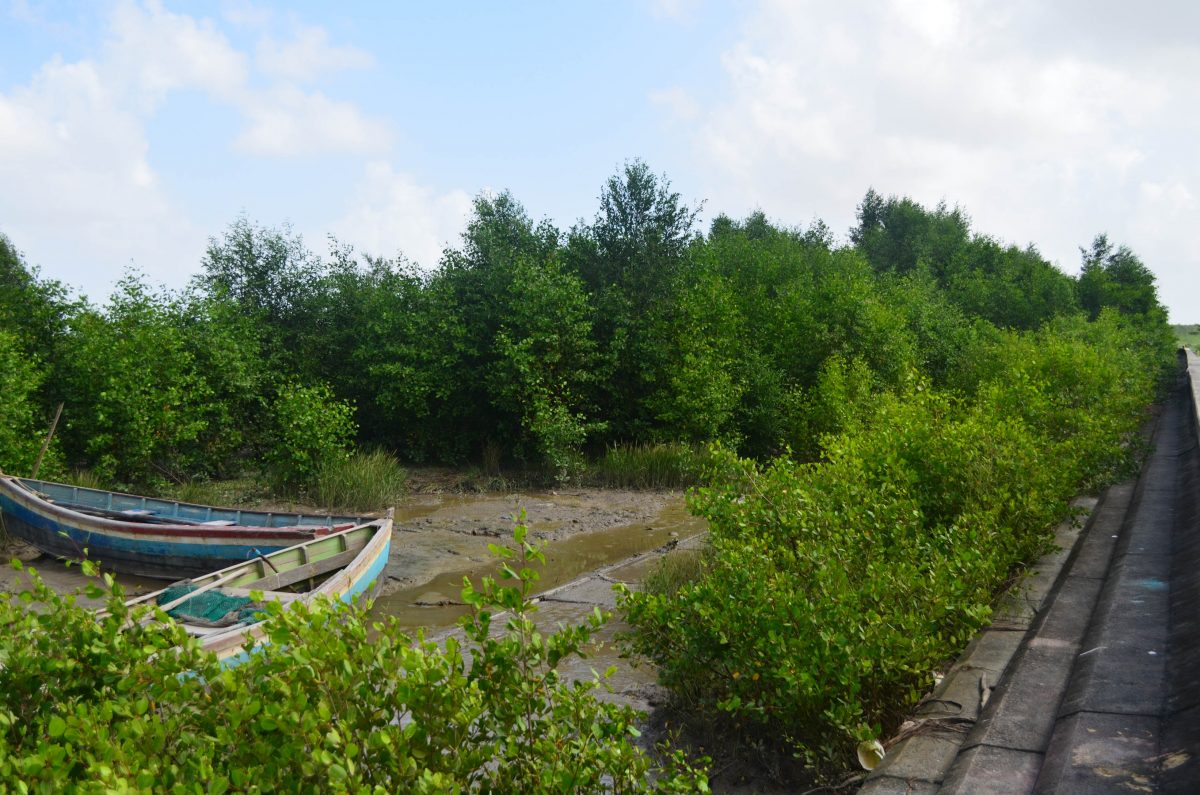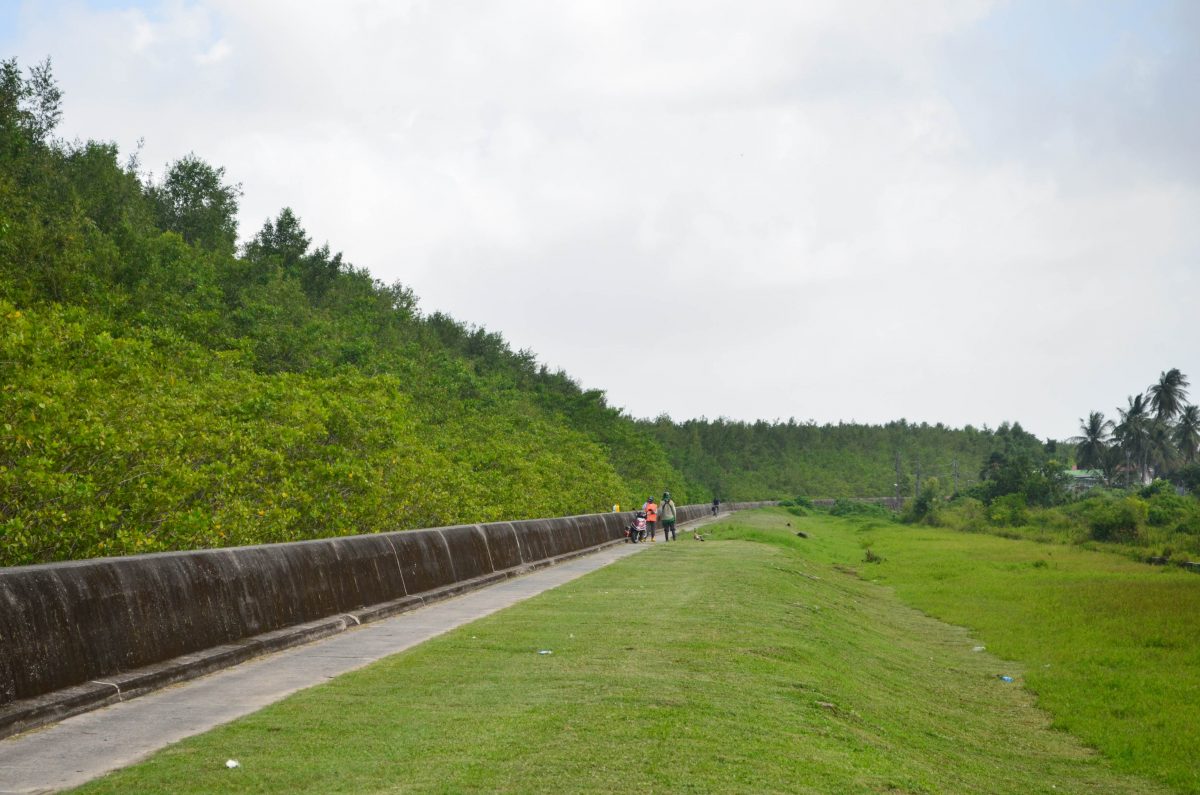Fishermen who anchor their boats at a channel near Ogle are thankful for the expansive mangroves growing along the East Coast of Demerara saying that it contributes immensely to their lives on a daily basis.
While mangroves are better known for their role as natural sea defences, they represent a lot more for fishermen.
“They offer us a good night’s sleep,” a fisherman named Norbert (only name given) laughingly said before going on to explain that the mud that comes along with mangroves keep their boats in place and now there are rarely instances of them finding a boat capsized and broken. As a result of this, he said, they usually anchor or tie their boats close to the mangroves.

Small as it may be, Norbert said, it saves them a lot of money and the effort of rebuilding a boat. “We glad the mangroves are here because it indirectly provides safety for our boats because when they are not here sometimes you come and see a boat bruk up and gone out at the bottom there and now this mud come here we are so happy we can go home and sleep peacefully and just tie up we boat with no worries,” he said as the other fishermen nodded in agreement.
Norbert disclosed that they spend most of their days and nights at sea or at the seawall and the mangroves have proven to be nothing short of an ally to the fishermen. John Ally, another fisherman, quipped that sometimes they have to go out to sea very early and would spend the night at the little shacks that they have built for that reason.
“Even if is not a big nice house we still get things here and these trees, I don’t think people know how important they are unless they play a small role in their daily life,” he said, before continuing on with his previous statement, remarking that as a result of the mangroves, there is little to no flooding in that particular area.
Ally added that it must not be forgotten that mangroves play a bigger and more important role in Guyana along the coast but they appreciate the little contributions it makes to their daily lives. He noted that they need to work hard to earn their money and if their boats and shacks keeping getting destroyed they would barely be able to survive.
Meanwhile, Norbert acknowledged that the mangroves seemed to have started growing rapidly along the coast. He disclosed that many of the mangroves closer to the seawall are very young while the rest closer to the sea are older. “We are very happy with its fast growth. This is a good thing and it will not affect us,” he said.
He pointed out that while they have to endure the sandflies and mosquitos, this is not an issue and should not be for anyone, as no one spends more time around the seawalls and mangroves than fishermen. He explained that although there might be thousands of these insects, they are usually found in between the mangroves and most of the fishermen have never really gotten sick.
The fisherman also emphasised the importance of the mangrove forest to Guyana’s coastline because the seawalls don’t always prevent flooding.
“Everybody living on the coast needs them and should appreciate them. They are here to protect us,” he said.
Another fisherman, who chose not to state his name, told Stabroek News that he was among the few persons who took part in a mangrove planting exercise years ago. Initially, he said, they planted the seedlings further on the beach but the waves washed them closer to the seawalls which is why a large portion of the beach has no mangroves growing on it while the area close to the seawall has turned into thick forest.
Mangroves are unique plant species as they can survive under harsh conditions, such as water poor in oxygen, salt water, and brackish water. They cover about 290 km of Guyana’s 430 km coast, and line many of the rivers in the country. They have since been declared a protected species as they benefit not only the environment but also the people. In recent decades, the mangrove forest that once covered the entire coast has been drastically depleted, and in many instances, lost altogether.





